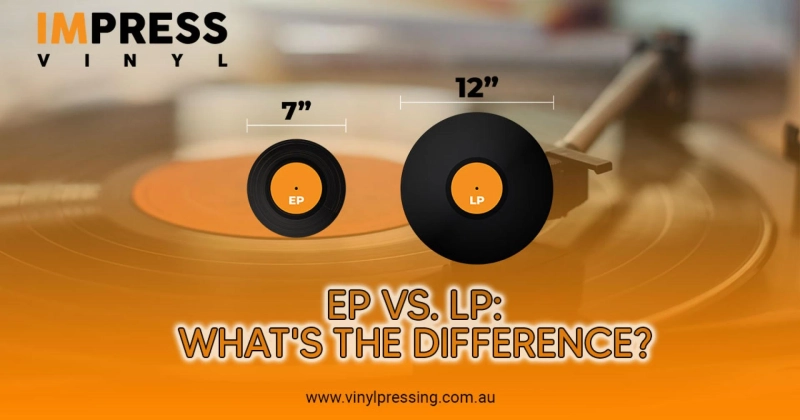Vinyl records are a timeless classic that has made a comeback in recent years. They offer a warmth and depth of sound that is unmatched by digital music. Vinyl records come in different sizes and types, but two of the most common ones are EP and LP vinyl records. In this blog, we will delve deeper into the difference between the two and help you understand which one is right for you.
What is an EP vinyl record? EP stands for Extended Play, and it is a vinyl record that has more tracks than a single, but fewer tracks than a full album. The typical EP vinyl record has four to six tracks, and it usually plays at 45 RPM (revolutions per minute). It is important to note that not all EP vinyl records play at 45 RPM, as some can also play at 33 1/3 RPM.
EP vinyl records were first introduced in the 1950s as a way for record labels to release music that did not fit the traditional single or album format. They were often used to release extended versions of popular songs or to introduce new artists. EPs were also more affordable than albums, making them a great option for music fans on a budget.
What is an LP vinyl record? LP stands for Long Playing, and it is a vinyl record that has more tracks than an EP. The typical LP vinyl record has eight to twelve tracks, and it usually plays at 33 1/3 RPM. LPs can also come in double or even triple albums, which can have up to 30 tracks or more.
LP vinyl records were introduced in the late 1940s and quickly became the primary format for music albums. They allowed for a more extended playtime and more space for artwork and liner notes. LPs were also more expensive than EPs, making them a status symbol for music fans.
EP vs LP vinyl records: What's the difference? The main difference between EP and LP vinyl records is the number of tracks and the playing time. EPs typically have four to six tracks and playtime of around 10-15 minutes per side, while LPs have eight to twelve tracks and playtime of around 20-25 minutes per side.
EP vinyl records are often used to release singles, extended versions of popular songs, or to introduce new artists. They are also a more affordable option for music fans who don't want to buy a full album. LP vinyl records are primarily used for full-length albums and allow for a more extended playtime, more space for artwork and liner notes, and a more complete listening experience.
Which one should you choose? Choosing between an EP and LP vinyl record ultimately comes down to personal preference and the type of music you are looking for. If you are looking for a single or extended version of a popular song or want to explore new artists without committing to a full album, then an EP vinyl record is a great option. On the other hand, if you want to enjoy a full-length album with a more complete listening experience, then an LP vinyl record is the way to go.
In conclusion, EP and LP vinyl records are both unique and offer their own advantages. Understanding the difference between the two can help you make an informed decision when it comes to buying vinyl records. Whether you choose an EP or an LP vinyl record, you are sure to enjoy the warmth and depth of sound that vinyl records offer.
Source: Difference b/w EP & LP vinyl records


